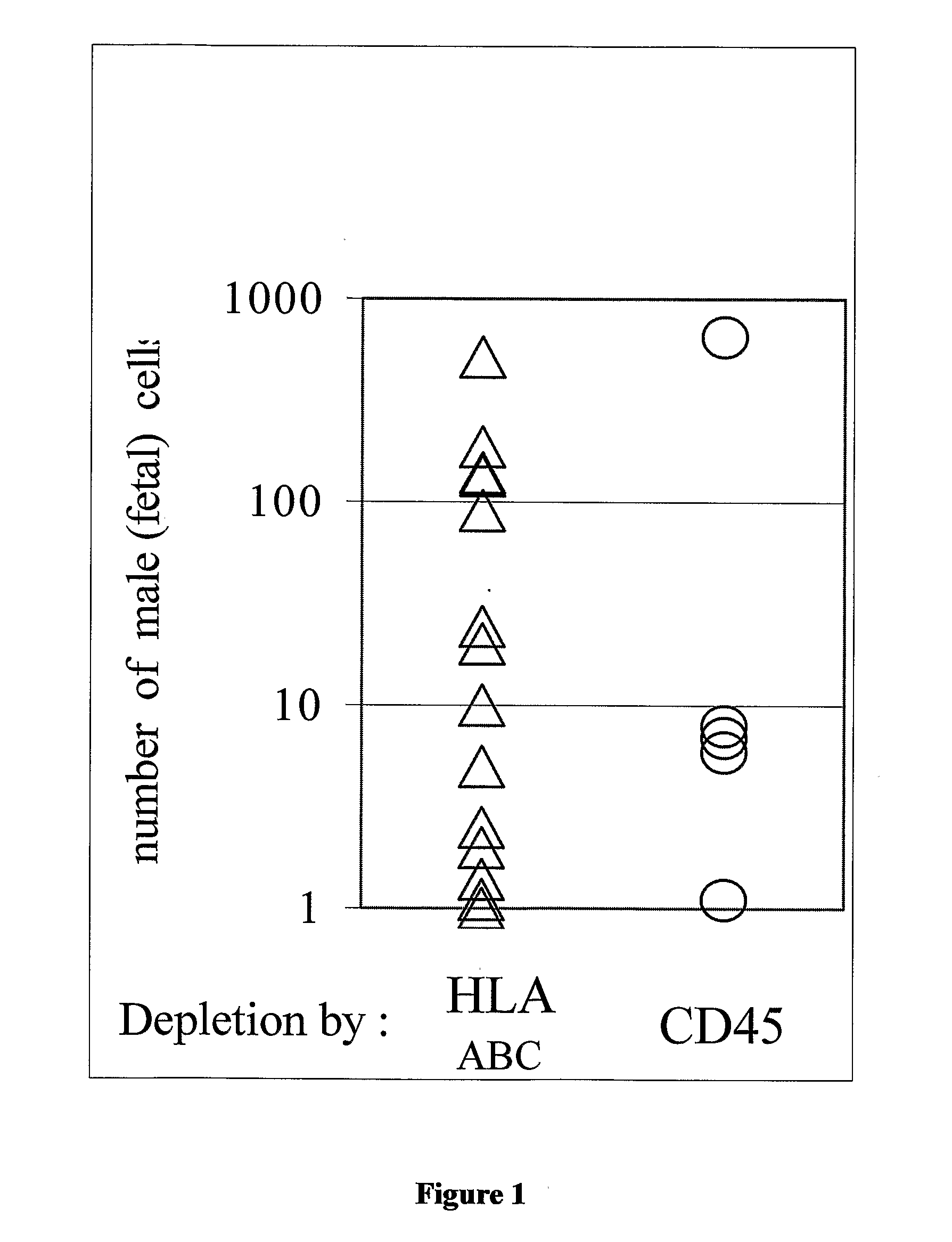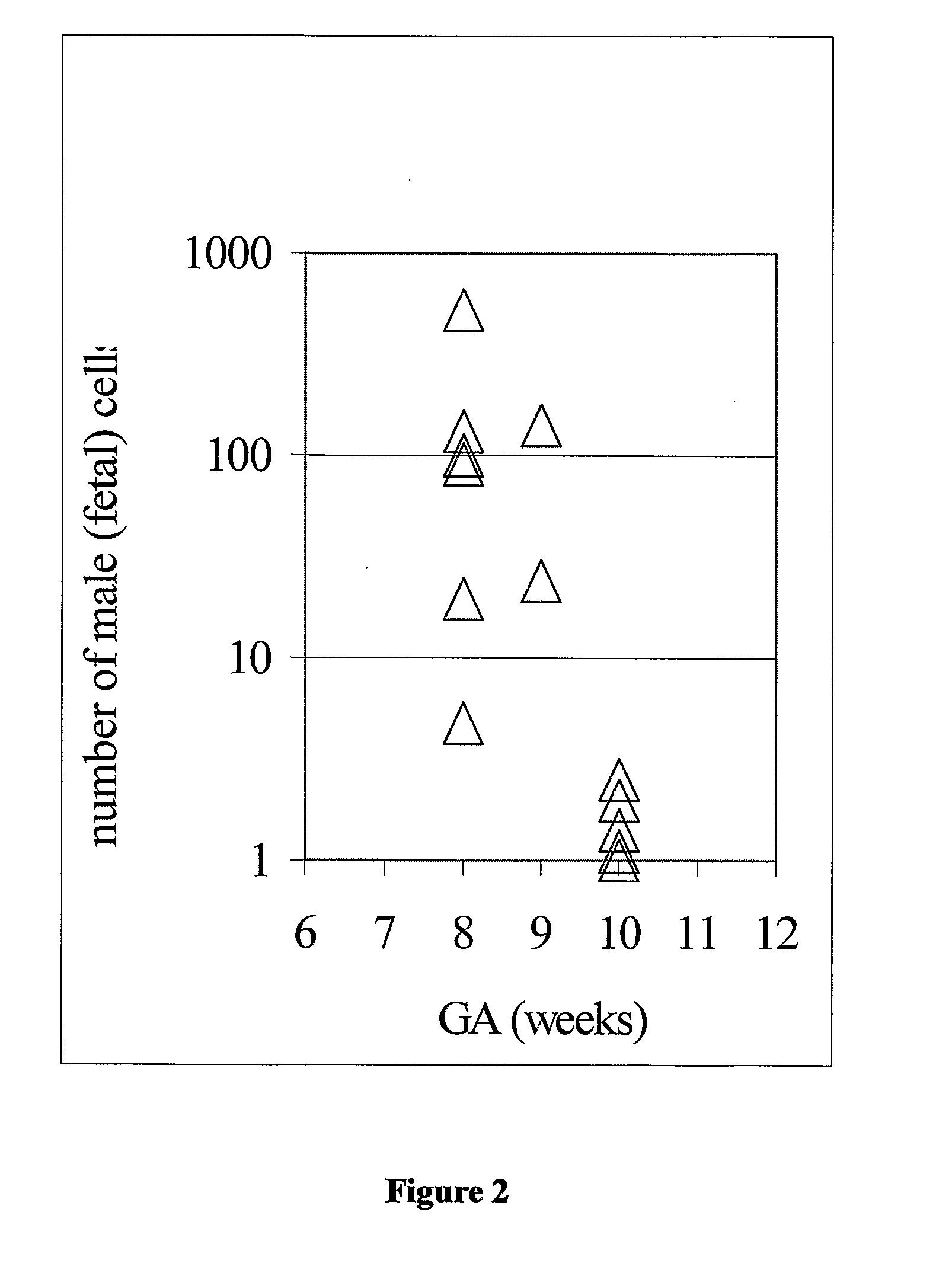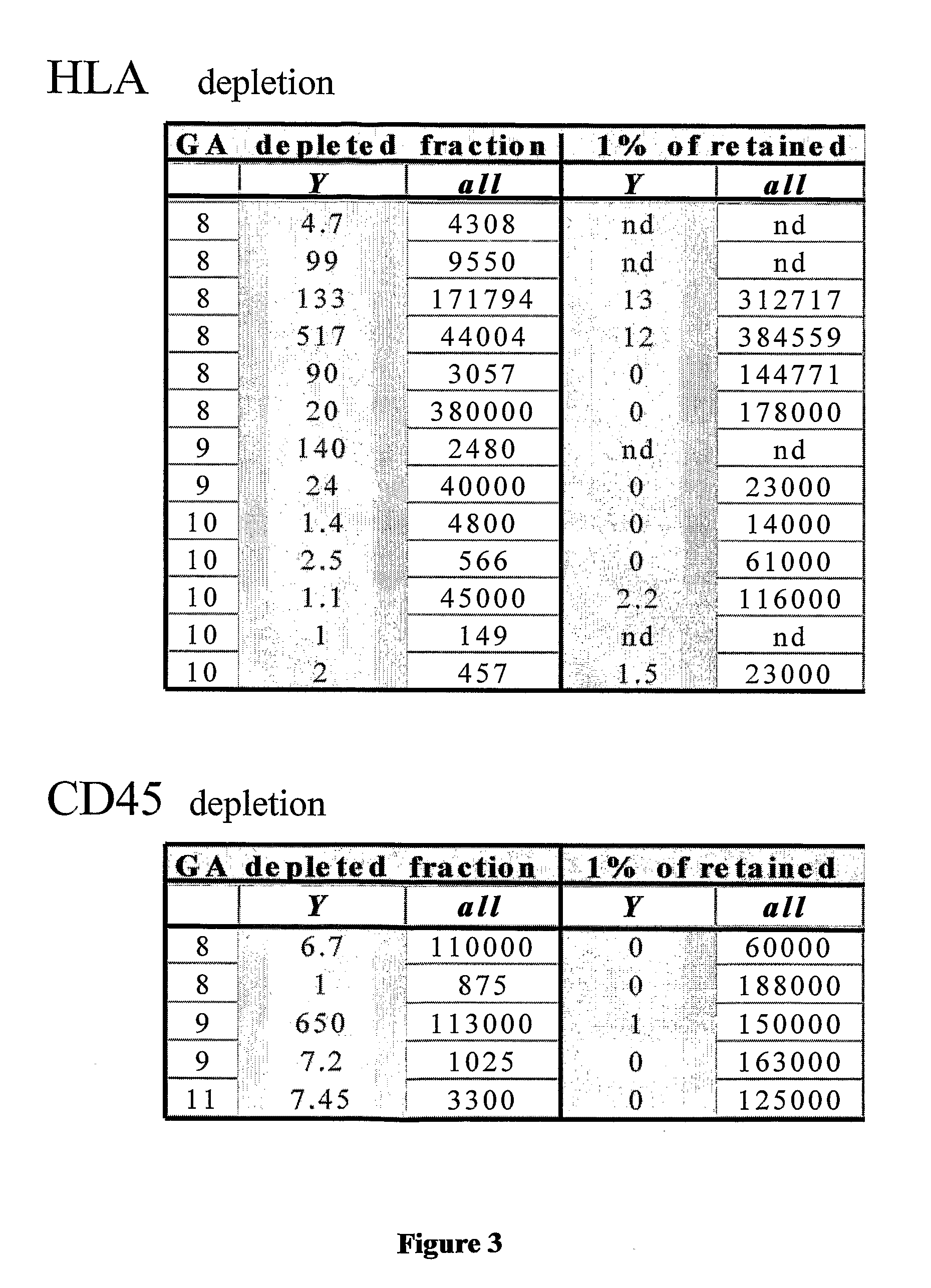Methods of enriching fetal cells
a technology of fetal cells and fetal cells, applied in the field of methods of enriching fetal cells, can solve problems such as enrichment of fetal cell populations, and achieve the effect of enhancing the purity of enriched fetal cell populations
- Summary
- Abstract
- Description
- Claims
- Application Information
AI Technical Summary
Benefits of technology
Problems solved by technology
Method used
Image
Examples
example 1
Enrichment of Fetal Cells Using Mouse Anti-Human HLA Class 1 Antigen Antibodies
Materials and Methods
Blood
[0216]Blood samples were obtained from a private abortion clinic and the Royal Children's Hospital (RCH) (Melbourne, Australia). Sample collection was anonymous, with donors de-identified. Whilst samples from the abortion clinic were specified to be pre-abortive, it was later determined that some of the samples that yielded higher numbers of fetal cells had been obtained post-abortion.
[0217]Blood samples (8-16 ml) were drawn into vacuum collection tubes with EDTA as anti-coagulant. The samples were processed either fresh or after overnight storage at 4° C.
Magnetic Cell Separation
[0218]Mononuclear cells were isolated by density gradient (Ficoll 1.077) centrifugation, and the entire samples were magnetically labelled with either of the following three procedures:[0219]1. Cells were exposed to saturating amounts of a biotinylated antibody against a HLA Class 1 epitope common to all ...
example 2
Enrichment of Fetal Cells Using Mouse Anti-Human HLA Class 1 Antigen ABC Clone 39-F2 or Clone W6 / 32, Both in Combination with an Anti-CD45 Antibody
[0229]Unless stated to the contrary the procedures used were the same as those described above for Example 1.
[0230]Blood at different gestational ages was subjected to gradient centrifugation, removing erythrocytes, then labelled with either of two clones (39-F2 and W6 / 32) of biotinylated monoclonal antibody, each directed against a different monomorphic determinant of HLA-A,B,C. [US Biological, USA]. Subsequently, the cells were labelled simultaneously with streptavidin-coated paramagnetic beads (“Captivate”, Moleculare Probes, USA] and paramagnetic beads coated with an antibody against the CD45 antigen [Miltenyi, Germany].
[0231]The labelled cells were passed through a magnetic column [Miltenyi], and the non-attached cells were subjected to quantitative PCR, targeting a Y-chromosome-specific sequence.
[0232]FIGS. 4 and 5 show total fetal ...
example 3
Further Studies Showing Enrichment of Fetal Cells Using Mouse Anti-Human HLA Class 1 Antigen ABC Antibodies
Materials and Methods
Blood
[0237]Blood of pregnant women was obtained from a private abortion clinic and the Royal Children's Hospital (RCH) (Melbourne, Australia). Maternal blood samples were drawn in steady-state pregnancy, prior to any testing or abortive procedure that could release fetal cells into the maternal circulation. For use as a model system, other samples were drawn during or after termination of pregnancy (post-termination samples) to provide blood samples with increased numbers of fetal cells due to fetal hemorrhage. Sample collection was anonymous, with donors de-identified.
[0238]Blood samples (8-16 ml) were drawn into vacuum collection tubes with EDTA as anti-coagulant. The samples were processed either fresh or after overnight storage at 4° C.
Magnetic Cell Separation
[0239]Mononuclear cells were isolated by density gradient (Ficoll 1.083) centrifugation, and th...
PUM
| Property | Measurement | Unit |
|---|---|---|
| Tm | aaaaa | aaaaa |
| diameter | aaaaa | aaaaa |
| pH | aaaaa | aaaaa |
Abstract
Description
Claims
Application Information
 Login to View More
Login to View More - R&D
- Intellectual Property
- Life Sciences
- Materials
- Tech Scout
- Unparalleled Data Quality
- Higher Quality Content
- 60% Fewer Hallucinations
Browse by: Latest US Patents, China's latest patents, Technical Efficacy Thesaurus, Application Domain, Technology Topic, Popular Technical Reports.
© 2025 PatSnap. All rights reserved.Legal|Privacy policy|Modern Slavery Act Transparency Statement|Sitemap|About US| Contact US: help@patsnap.com



